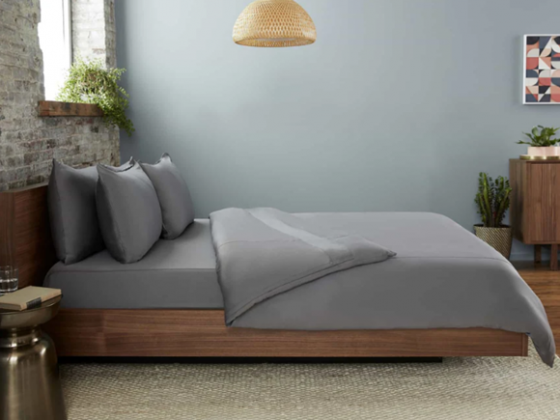Plantation-style interior design dates back to the Antebellum era (1830–1860) in the Southern States of America, when grand estates flourished. This design showcases architectural elements of French Revival and Greek Revival styles with a touch of Spanish and Gothic ornateness in some homes.
A Breath of Southern Elegance
Plantation homes weren’t just buildings; they were reflections of a lifestyle in the sultry South. These homes were designed to beat the stifling summer heat. Natural cooling features like expansive porticos and open porches, often referred to as galleries, adorned each story of these grand residences.
Some of the distinctive architectural features included arched windows, elaborate keystones, rosettes, onlays, medallions, chair rails, and wainscoting. Fireplaces, often the sole sources of warmth, graced nearly every room. The ceilings soared to no less than 12 feet high and had intricate medallions to trap hot air in the summer. Many plantation homes featured pocket doors, useful for privacy and cross-ventilation, and wooden floors, often oak or heart pine.
Key Plantation Home Features
Two defining features of plantation homes were the grand entrance hall and the elegant parlor or drawing room. The entrance hall was not just a reception area; it was a proclamation of grandeur and wealth. Sweeping curved staircases took center stage, often opposite the main double door entrance, creating a dramatic visual. This staircase played a central role in events and celebrations held within the home.
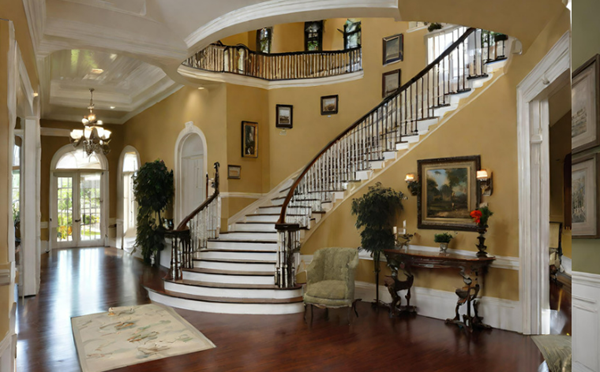
The parlor was another essential part of plantation home life, and in larger estates, two parlors were common. The larger one, known as the drawing room, was reserved for formal entertainment, where men would retire after dinner to enjoy cigars and cognac. The smaller parlor was for family and daytime visitors to relax with tea or coffee.
Elegant Color Palettes
Plantation homes were typically stuccoed and white-washed, but some were made of brick, reflecting the wealth of their owners. Colors for interior decor often included deep blues, various shades of gray, emerald greens, deep roses, pale lavenders, rich reds, and sunny yellows.
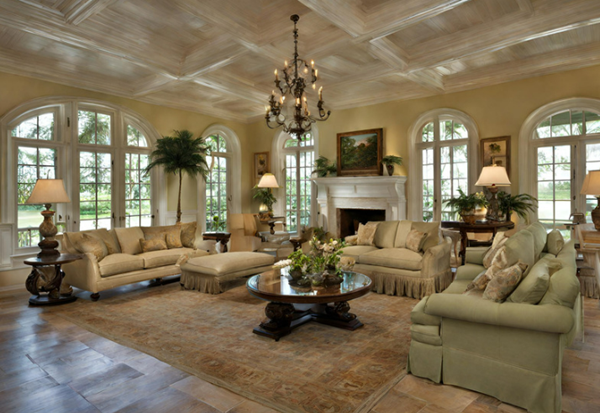
Furniture Styles of Distinction
The era of plantation homes saw the popularity of iconic furniture styles like Chippendale, Empire, Hepplewhite, and Queen Anne. Mahogany wood was highly cherished for crafting these elegant pieces.
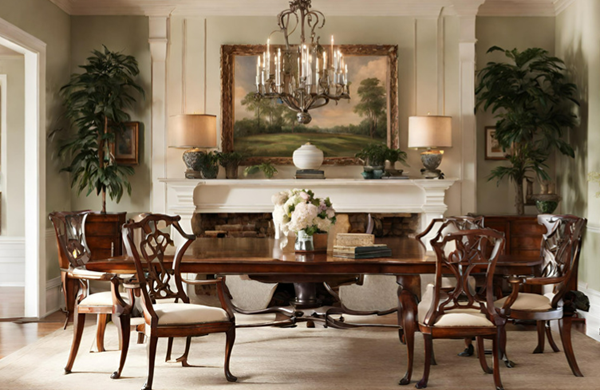
A Must-Have: The Rice Bed
A rice bed is a hallmark of plantation home design. These tall four-poster beds with intricately carved posts depicting rice or tobacco plants were common in South Carolina and the South in general.
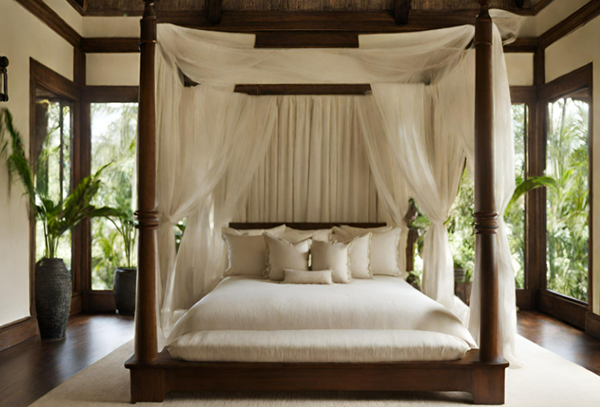
Luxurious Fabric Choices
Damask was the fabric of choice for upholstery, with velvet, English Chintz, and French tapestries also used. During the summer, white cotton duck canvas slipcovers protected furniture from heat and humidity. Thick wool rugs were often replaced with cool sisal rugs and heavy draperies with light and breezy sheers.

Elegant Window Treatments
Plantation homes boasted silk damask draperies with large, ornate cornices, often gilded with gold. Drapery treatments might include red damask drapes with lace overlays, lined in luxurious silk for added opulence. “Plantation shutters,” or wide wood shutters, were used to block the sun while maintaining ventilation.
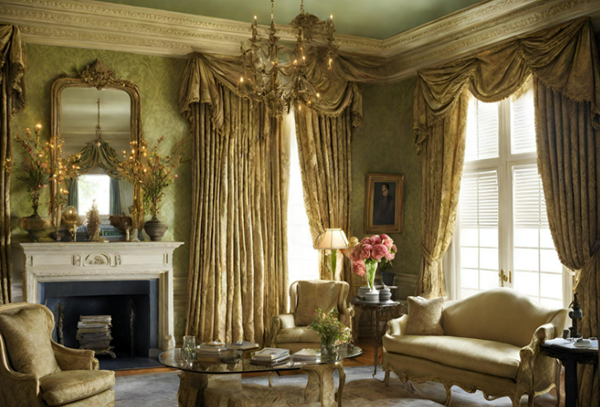
Captivating Floor Treatments
Hardwood floors, usually oak or heart of pine, graced plantation homes. Italian marble floors adorned many entrance halls and staircases, while parquetry patterns added sophistication to various rooms.

The Final Flourish
To complete the plantation home design, consider adding an array of art pieces, sculptures, antique baskets, China, silverware, cut-glass items, embroidered doilies, and needlepoint pillows. These finishing touches epitomize the talents and abilities of the homeowners.
Incorporating plantation-style interior design into your home allows you to embrace a rich history of Southern grandeur and hospitality while adding timeless elegance and charm to your living space.
